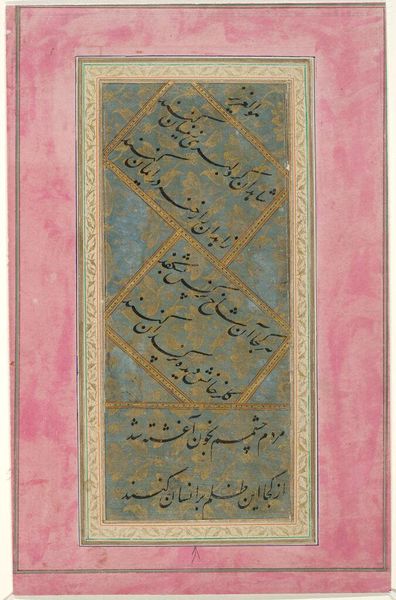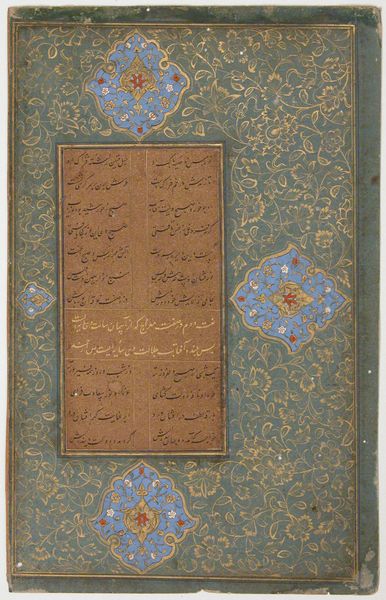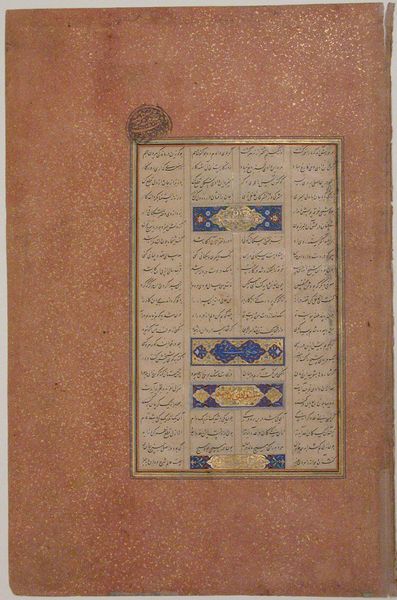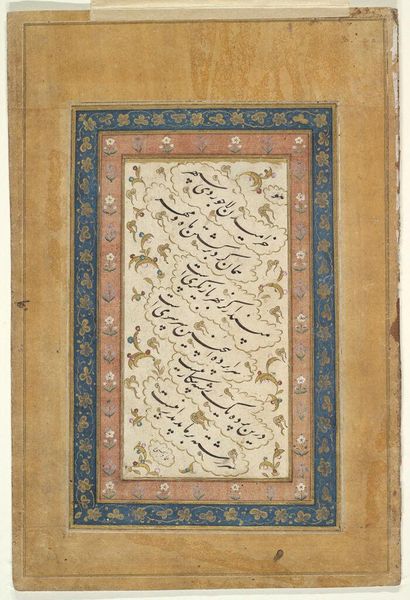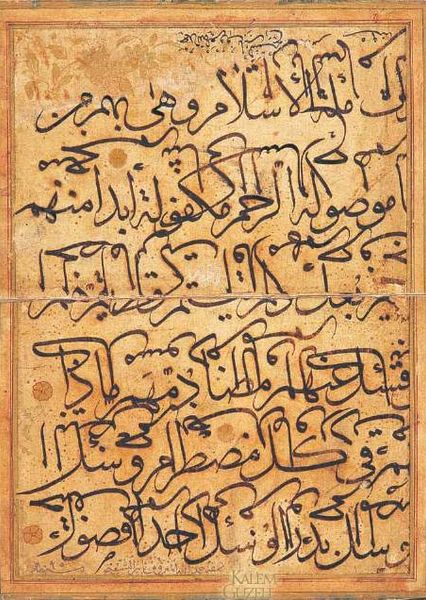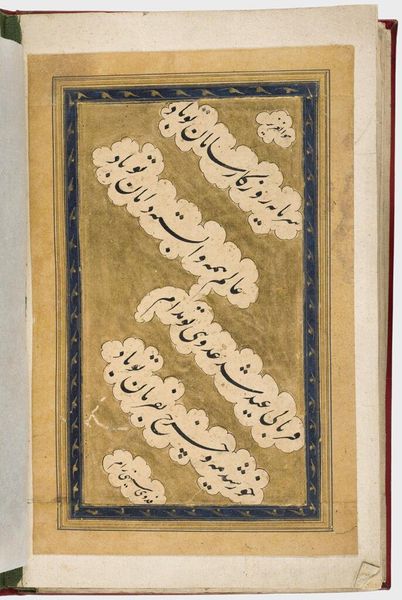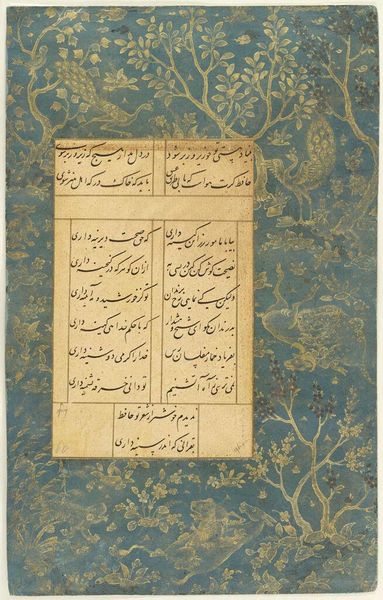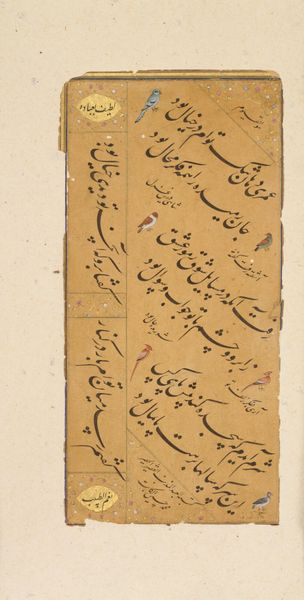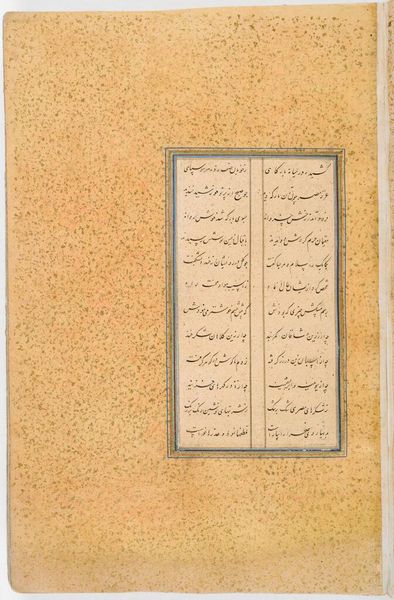
drawing, paper, ink
#
drawing
#
asian-art
#
paper
#
text
#
ink
#
islamic-art
#
calligraphy
Copyright: Public domain
Curator: Today we are looking at a calligraphic work called "Kıta" by Mustafa Rakım. Executed in ink on paper, this drawing beautifully exemplifies Islamic art traditions. What strikes you initially about it? Editor: There's an incredible rhythm to the lines. The interplay of thick and thin strokes creates a sort of visual music; the strong black calligraphy against that parchment color creates a very serene, yet powerful feeling. Curator: That's astute. Considering the socio-cultural context, calligraphy in Islamic art wasn't merely decorative. The word, particularly from the Quran, held immense spiritual and cultural weight. Rakım, working within this tradition, wasn't just creating visually pleasing forms; he was actively engaging with and conveying deeper meaning. The gendered associations with textual interpretation at that time should also be considered. Editor: Exactly. The forms are beautifully balanced. I'm intrigued by the semiotic aspects. Notice how certain letterforms extend or curve in ways that almost transcend their literal function? It approaches pure abstraction, inviting subjective interpretations and emotional resonance, much like poetry does. Curator: Precisely, and that intersection of form and content speaks to the core of Islamic artistic expression. The arrangement isn't accidental; there's a clear visual hierarchy. And that vertical orientation could potentially signal power structures too. What kind of impact do you think that has on contemporary understandings of gendered power roles at the time? Editor: A lot. Overall, this image highlights an artistic language in which negative space carries as much weight as the drawn strokes, emphasizing clarity, and enhancing the rhythmic composition. It reflects discipline, control, and refinement. I think the skill is evident. Curator: Reflecting on it, I am particularly struck by how intertwined social meaning and textual aesthetics become and how they help us view this work within a specific context. Editor: Yes. In a more formal way, its careful composition offers us more than its religious significance. The elegant rendering still commands respect.
Comments
No comments
Be the first to comment and join the conversation on the ultimate creative platform.
